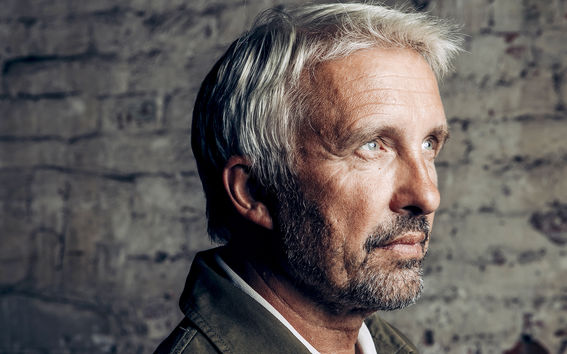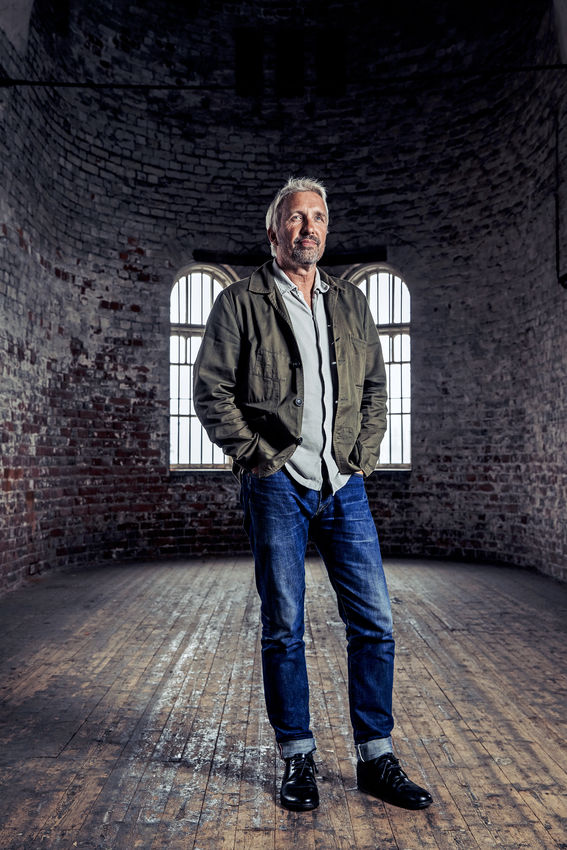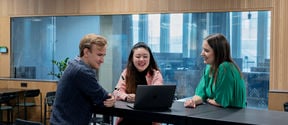Design emissary

Kari Korkman was on the road to Fiskars. The year was 2001 and a song by J. Karjalainen was playing on the car radio. While driving, Korkman thought about the Design Partners 01 exhibition he had recently founded. The 24-hour happening, then staged in old railway storehouses in the very heart of Helsinki, showcased products that were only coming onto the market. The event, a satellite of the larger Habitare expo, had been a success as such, but, for its producer Korkman it had been, in his own words, bloody expensive.
‘Design Partners was supposed to have been a one-off event, but I couldn’t afford to end it. Had I called it quits after one go, all the money I’d invested in the exhibition would have been wasted. I needed to come up with something for the next year,’ he recalls.
‘I thought that here is a music-maker who really seems to understand the Finnish audience. I wondered if Karjalainen could design a dish or a chair that would be equally attractive to the general public.’
Funny partners
His thought continued during the drive. Korkman reckoned that a musician could well design a product if he or she were partnered with a professional designer. This is how the idea for the next Design Partners emerged.
The exhibition Two visions, one design opened at the Design Museum in 2002. Korkman connected partners with quite differing backgrounds for this exhibition. Harri Koskinen was paired with TV producer Saku Tuominen and Eero Koivisto with choreographer Kenneth Kvarnström, while Brita Flander was coupled with writer-dramaturg Outi Nyytäjä. Korkman even debated having J. Karjalainen himself take part in the project. The participants were briefed to come up with an idea and design for a new product.
Korkman says the exhibition outcome was incredible.
‘The products were amazing, outright mind-blowing. Two complete strangers just started brainstorming and designing. There was real passion there. I’m certain that the 2002 Design Partners exhibition still strongly influences my work, making interdisciplinarity its primary idea. These exhibitions gave my activities direction.’
His present-day work takes place at the offices of Luovi Productions Oy in an old customs warehouse in Katajanokka. From here, Korkman pilots the Helsinki Design Week event while also serving as president of the global World Design Weeks network, among other things.
‘This is my wee little empire, which sprang up from Katjanokka to manage the Helsinki Design Week, one of the oldest design week events in the world.’
One way of strengthening the empire is cooperation:
‘Luovi is still a small company and cooperating with others is pretty much its only option. Perhaps my personal strength is a belief that you can cooperate with any person, organisation or firm.’
Another factor is expanding activities into a media-based format.
‘Design Week is a once-a-year event, but I think we should be able to operate year-round. That’s why we are developing the urban festival into a media, which promotes the design cause all year.’
Self-designated title
Things were very different some thirty years ago. At the time, Korkman founded Luovi without a single client or product idea. He had years of work experience at designer Hannu Kähönen’s firm Creadesign, where he, right after graduating with a Master’s in business, had worked on sourcing new clients. For about three years, he was also the Managing Director of Moform Oy, a company established by Kähönen. But then the recession of the 1990s hit.
‘Hannu and I really tried hard to find something good we could do together, but those were dark times for everyone. There was radically less work around. My only remaining option, if I wanted to realise my own visions, was to set up my own company.’
And he had plenty of vision. He’d made many connections with designers during his years at Creadesign, so Kari Korkman decided to become a design producer. He modelled his work and self-developed title on movie production and book publishing.
‘Where someone else would read manuscripts or listen to demo tapes, I started to study product concepts. I positioned and offered myself as an agent at the point where designers and their product ideas come together with manufacturing and marketing.’
Brainstorming is a pleasure
Kari Korkman had written his Master’s thesis on the world of banking, but he knew that he wouldn’t be happy if he remained working with numbers. Perhaps the fresh business graduate was drawn towards art and design by blood heritage, as his family has produced lots of artists and architects.
‘Were my talents different, I would have surely aimed for architecture. But I realised at an early stage that I didn’t have what it takes to make it in that field. My family has always appreciated creativity, so I wanted to be in contact with creative people.’
Brainstorming, the process of getting together to deal with a problem, to find a solution for a challenge, is the phase he enjoys most.
‘For sure it is one of the reasons why I have stayed in the world of design for well over thirty years.’
The climate issue can’t be avoided
So what would Kari Korkman do if he were unable to work in design and art? This question prompts a prolonged silence. The CEO recognises his ability to think strategically and form a comprehensive view. He knows he’s pretty good with people. He’s also aware that his personal strengths are on the practical side, he’s a doer.
‘My efforts have always been based on intuition, or a vision of what is sensible or necessary in each situation. Although you could, for sure, often put that sensible in quotation marks.’
After thinking about it, Korkman reckons he’d be working for the climate.
‘I want what I do to have meaning. I can imagine working to find solutions to the burning questions related to climate change.’
Kari Korkman appreciates how art and design can react to contemporary phenomena and events. Concern for the climate was visible in both September’s Helsinki Design Week and in Korkman’s latest project, the Fiskars Village Art and Design Biennale, which launched this year.
This year’s Helsinki Design Week focused on the theme of Learning Climate, while Fiskars examined the co-existence of humans and nature.
‘The Design Week and the Biennale both tap into the zeitgeist. This enables us to influence public opinion and, through it, consumer behaviour and habits.’
After another thoughtful pause, Korkman continues:
‘This means that we can influence decision-makers and industry. In other words, we can affect the future. Perhaps the most satisfying aspect of my work and position is the fact that I can influence things. Arranging topics into themes and highlighting them are how I wield influence. When Helsinki Design Week challenges companies and cooperation partners to think about their attitude to global warming, I believe I am doing meaningful work. Design Week makes a strong contribution to activities that aim to curb climate change which – for heaven’s sake – really is the only thing for it to do.’

- Kari Korkman graduated with a Master’s degree from the Helsinki School of Economics in 1990. Aalto University awarded him an honorary doctorate in art in June 2019.
- CEO of Luovi Productions Oy, which produces the Helsinki Design Week event and the Helsinki Design Weekly media outlet, among other things.
- President of the global World Design Weeks network.
- Curator of numerous design exhibitions and events: the first Design Partners event in Helsinki in 2001, Design Market events since 2005. Introduced PechaKucha Night storytelling gatherings to Finland in 2006. The Fiskars Village Art & Design Biennale was established in 2019 and is set to continue until 2025 at least.
- Married to Eevi, who Korkman says has been crucial to his ability to handle his many responsibilities and run a business. Father to three adult daughters Anni, Iris and Taru. Anni Korkman works as the programme director of Helsinki Design Week.
- Sails a wooden yacht as a hobby.
Text: Tiiu Pohjolainen.
This article is published in the Aalto University Magazine issue 25, October 2019.
- Published:
- Updated:
Read more news

Four new Professors appointed in the School of Engineering
Professors of Practice Katja Tähtinen and Assistant Professors Jan Akmal, Magda Posani, and Jenni Partanen were appointed to the career path of professors during August-October 2024.
Call for doctoral student tutors, January 2025
Sign-up to be a tutor for new doctoral students as part of the Aalto Doctoral Orientation Days!
Difficult economic situation highlights the importance of networking in job search
Aalto Talent Expo, Aalto University's largest recruitment event, brought together 90 employers and thousands of students.